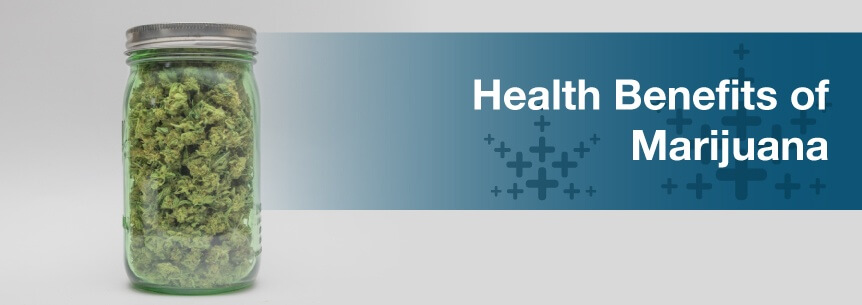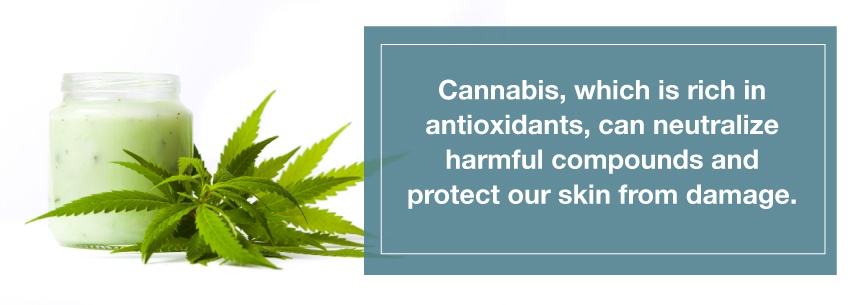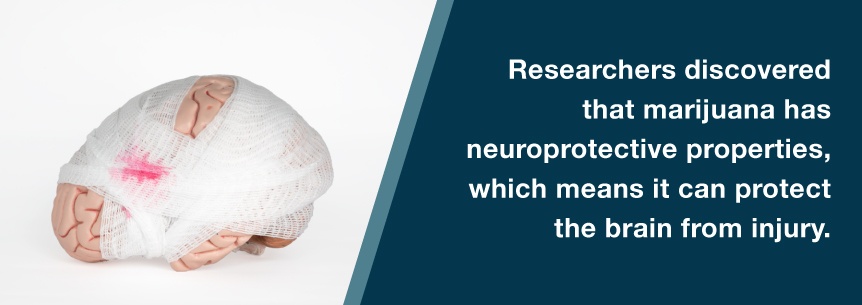
Marijuana. Pot. Ganja. Mary Jane. Whackatabacky. The names are countless, but they all refer to the same familiar substance: cannabis. This plant is best known today for the “high” it produces, but it has actually been used as a medicine by civilizations around the world for thousands of years. Although it has been criminalized in recent history and is still illegal in many parts of the world, more and more people today are using marijuana for its many medicinal benefits.
Marijuana contains chemical compounds called cannabinoids, which activate cannabinoid receptors in our cells. This activation, in turn, affects the neurotransmitters that are released in the brain and influences a wide variety of body processes. The two most well-known cannabinoids are tetrahydrocannabinol (THC), which produces a “body high,” and cannabidiol (CBD), which produces a “cerebral high.”
Marijuana strains fall into one of three groups:
Within each of these groups, a large number of strains exist. Each strain has a different concentration of cannabinoids and, as a result, produces different effects. Speak with your physician to figure out which strain will best suit your needs.
One of the reasons marijuana provides so many health benefits is because its cannabinoids interact with the receptors in the body’s endocannabinoid system, which regulates a variety of important functions like sleep, mood, pain control and immune response. Normally, the body produces its own type of cannabinoids, endocannabinoids, to bind with these receptors, but when there aren’t sufficient quantities of these endocannabinoids, the cannabinoids of marijuana can be used as a replacement to keep these functions working properly.
Below are a few of the health benefits that marijuana can provide:
Our skin is constantly bombarded and damaged by free radicals, which are harmful compounds found in UV rays and pollutants. Cannabis, which is rich in antioxidants, can neutralize these harmful compounds and protect our skin from damage.

As we age, our skin secretes less oil and becomes drier as a result. The endocannabinoid system regulates oil secretion, and marijuana is thought to help maintain the secretion and keep our skin moisturized as we grow older.
Although no study has yet been conducted on the long-term effects of cannabis on aging skin, marijuana has been effective in treating dry skin conditions like eczema.
Some researchers believe that marijuana can lessen hypertension, a serious condition that can lead to cardiovascular disease. It was discovered that some compounds in marijuana bind with cannabinoid TRPV(1) receptors, producing hypotensive effects.
Some studies have found a positive correlation between marijuana use and healthy body weight. One 2010 study concluded that marijuana consumers had thinner waistlines than those who abstain from the substance, and a study in an Inuit community found pot smoking use to correlate to lower BMI. These reports also concluded that pot smokers are 30 percent less likely to develop Type 2 diabetes.
Although better known for causing hunger, some studies suggest that cannabis may actually help suppress your appetite. In one experiment, researchers administered the cannabinoids CBD and THCV to mice and observed that it increased their expenditure of energy by increasing their metabolism.
One of the many functions regulated by the endocannabinoid system is the formation of bones and protection against age-related bone diseases like osteoporosis. Both THC and CBD are involved in maintaining bones, and CBD has even been shown to improve the healing of fractured bones.
Additionally, researchers have found that cannabis can provide relief from joint pain and can help to protect the nerves in joints.
Several studies have concluded that cannabinoids have anti-inflammatory properties. One study administered THC to mice, which caused the death of T cells and dendritic cells, which in turn led to suppression of the immune system. These results suggest that THC may be beneficial in situations where the immune responses should be dampened, such as with autoimmune diseases and graft rejection. This application of THC could have a far-reaching impact, as some researchers believe that chronic inflammation is a possible cause of many aging-related diseases, such as rheumatoid arthritis, multiple sclerosis, Alzheimer’s and heart disease.
In one study, 121 patients diagnosed with migraine headaches were given medical marijuana. Patients found that the number of migraines they experienced per month decreased from 10.4 to 4.6 with the use of cannabis, and 14 patients reported that the migraines vanished completely.
Researchers discovered that marijuana has neuroprotective properties, which means it can protect the brain from injury. In fact, leading Harvard researcher Lester Grinspoon even wrote an article to the NFL suggesting that its players consume cannabis to combat head trauma.

We all have cancer cells somewhere in our body at any given time. Studies show that THC helps to increase the production of ceramide, a molecule which kills cancer cells. CBD is thought to help prevent cancer cells from spreading.
Cannabis is known to provide relief for one of the most unpleasant treatments — chemotherapy. It lessens chemotherapy patients’ pain and nausea, and increases their appetite.
Marijuana doesn’t just lessen the side effects of chemotherapy — it can also treat cancer itself. Researchers in Spain observed that THC causes cancer cells in the brain to die, in a process called autophagy. In this experiment, mice with human tumors were given THC, which induced autophagy and slowed the rate of growth of the tumors. When given to two human patients with aggressive tumors, similar results were found. Researchers at Harvard had similar success reducing lung tumors implanted in mice — in three weeks the tumors shrunk in half.
Marijuana is thought to lessen the pain of patients with diseases that affect the nerves, such as diabetes and HIV. Researchers studied the effects of marijuana on 16 HIV patients suffering badly from neuropathy. After just a week of smoking the substance, 10 of the patients reported more than a 30 percent reduction in their pain.
A 2012 report found that CBD is the main cannabinoid responsible for this effect, which reduces neuropathic pain by targeting A3 glycine receptors.
One of medical marijuana’s most common uses is the treatment of chronic pain — a condition that 1.5 billion people around the world suffer from. Chronic pain is now a qualifying medical condition in many states, which means you can be treated by the drug.
Some of you may have heard that cannabis increases anxiety, which is sometimes true — but it depends on the content of THC and CBD. If you consume a strain high in THC, this will lead to anxiety and paranoia. But if you consume a strain low in THC but high in CBD, which counters the effects of the THC, you’ll feel more relaxed.
It is believed that marijuana can also relieve depression — a disorder affecting 350 million people worldwide. It acts in the same way many antidepressants do, but it doesn’t require daily doses. Its side effects are also mild compared to those of other antidepressants, which include insomnia, fatigue and sexual dysfunction.
Several studies have concluded that marijuana relieves muscle spasms, a symptom common to spinal cord injuries and conditions like multiple sclerosis. In a 2012 experiment, researchers gave synthetic cannabis a to group of 30 MS patients unable to walk, and administered a placebo to 30 others. The group that was given the cannabis saw a decrease in muscle spasms one third more than the placebo group.
Nausea and vomiting are symptoms of countless illnesses, and cannabis is a powerful treatment for both symptoms. It’s more effective than pharmaceutical drugs and has fewer side effects.

Although marijuana can disrupt sleep cycles, it has also been shown to reduce nightmares, which is particularly useful for those suffering from PTSD. In a study published in ScienceDaily, subjects given cannabis reported an average of 75 percent reduction of their PTSD symptoms.
Marijuana is now being considered as a treatment for epilepsy. A new drug called Epidiolex, which contains CBD, may become the first drug of its kind to be approved by the FDA to help treat children with the disorder. In a recent study, researchers administered the drug to 214 epilepsy patients — none of whom were responding to other treatments — and observed an average of 54 percent fewer seizures.
Substituting the booze with the bud as your recreational substance is one of the easiest ways to improve your health. Cannabis has fewer side effects and the withdrawal effects are less unpleasant. Here are reasons that marijuana is less harmful than alcohol:
If you’re experiencing chronic pain, you and your physician may want to consider medical marijuana as a substitute for opioids. Marijuana, unlike opioids, is not addictive, and there’s no risk of overdose. In fact, reports show that states with medical cannabis laws have 25 percent fewer opioid-related deaths than those states without. It is thought that many of these deaths are a result of opioid prescriptions, and when medical cannabis becomes legal in a state, many patients opt for the safer alternative.
In addition to sharing some health benefits of cannabis, we’d like to dispel a few myths about its harmfulness:

For most medical marijuana users, the health benefits greatly outweigh the side effects. In some instances, however, patients may experience a negative reaction, so make sure to speak with your doctor and dispensary before trying. These professionals will help you find the strain and method of ingestion that will work best for you.
The health benefits of marijuana may already seem countless, but these findings are a mere teaser of the many exciting discoveries to come. Cannabis has over 400 chemical compounds, and we’re only just beginning to understand their potential. Marijuana’s illegal status and designation as a Schedule I Controlled Substance have sadly hindered research of the drug, but as more states and countries around the world legalize the substance, more researchers will have the opportunity to explore its medicinal possibilities.
If you’re interested in using marijuana as a health supplement and live in a state where it is legal, we encourage you to find a doctor in your area. And if you’d like to stay on top of the exciting developments in medical cannabis, consider signing up for our newsletter.